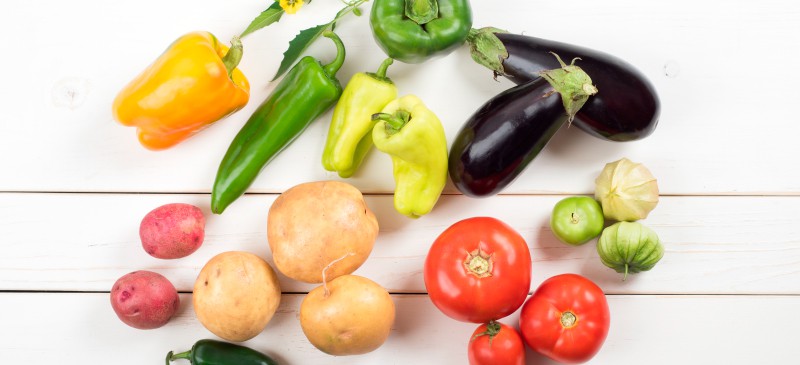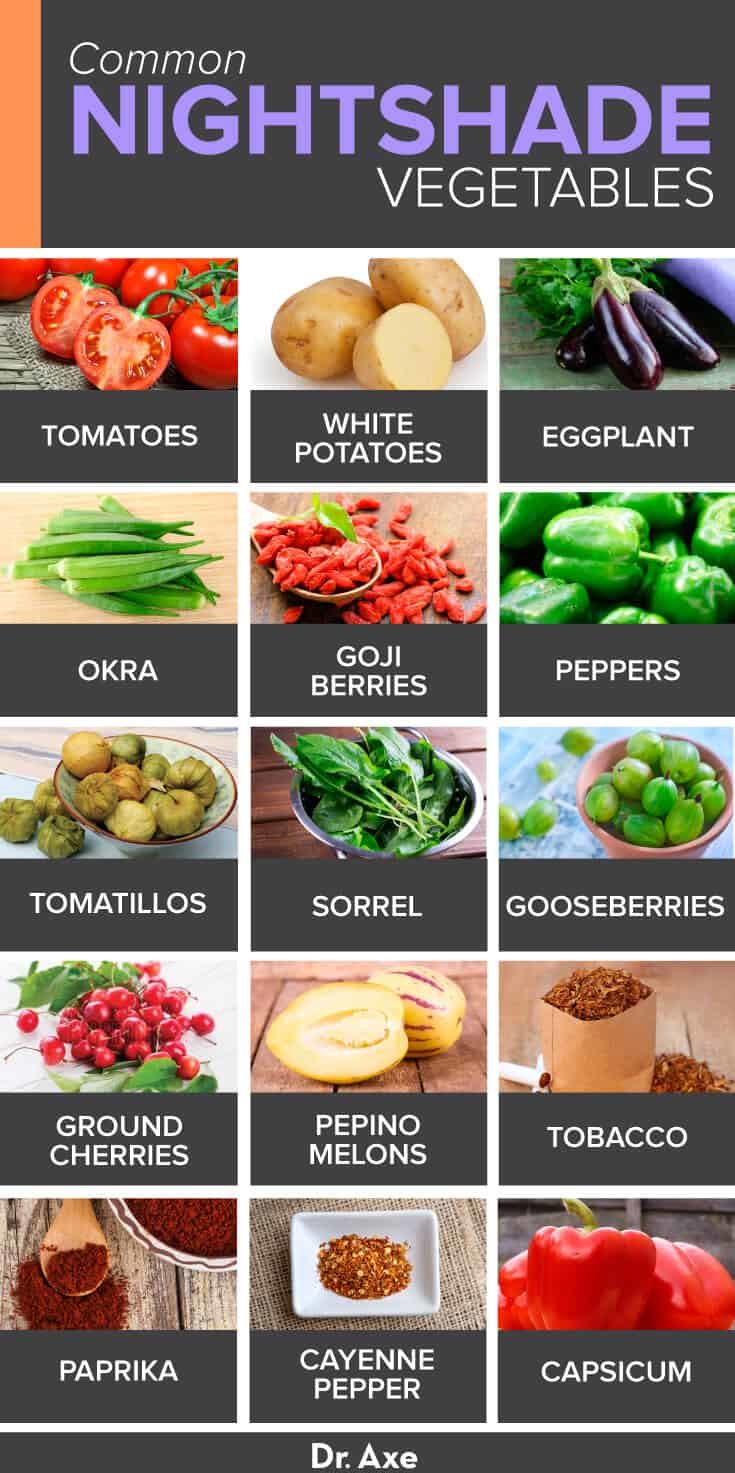This Dr. Axe content is medically reviewed or fact checked to ensure factually accurate information.
With strict editorial sourcing guidelines, we only link to academic research institutions, reputable media sites and, when research is available, medically peer-reviewed studies. Note that the numbers in parentheses (1, 2, etc.) are clickable links to these studies.
The information in our articles is NOT intended to replace a one-on-one relationship with a qualified health care professional and is not intended as medical advice.
This article is based on scientific evidence, written by experts and fact checked by our trained editorial staff. Note that the numbers in parentheses (1, 2, etc.) are clickable links to medically peer-reviewed studies.
Our team includes licensed nutritionists and dietitians, certified health education specialists, as well as certified strength and conditioning specialists, personal trainers and corrective exercise specialists. Our team aims to be not only thorough with its research, but also objective and unbiased.
The information in our articles is NOT intended to replace a one-on-one relationship with a qualified health care professional and is not intended as medical advice.
Nightshade Vegetables: How to Find Out If They’re Bad for You
January 9, 2023

If you are a person that struggles with food sensitivities, allergies, autoimmune disease, inflammatory bowel disease or leaky gut syndrome, then there is a chance that a class of vegetables called nightshade vegetables could be contributing to your health condition. I know you may be saying to yourself, “seriously, what can I eat?” From gluten-free to grain-free, no meat to all meat and back again — it’s difficult to wrap the brain around one more group of foods to put on the “watch” list.
As you will learn in this article, nightshade vegetables are completely healthy for most people, but for a few it can act as a trigger similar to wheat or dairy and cause major immune reactions.
The bottom line is this: When it comes to each plant in the nightshade family, everyone’s body responds in a unique way, but for most people these vegetables are not an issue. And those at risk often include those that have leaky gut, autoimmune diseases or have other gut-related illnesses.
There are specific signs of intolerance you can look for, so if you have leaky gut or autoimmune disease you will want to look out for any warning signs after eating nightshades such as joint pain, digestive issues, reddening of your skin or any type of inflammatory response.
So, what are nightshades and why they would they cause a reaction?
What Are Nightshade Vegetables?
Nightshade vegetables are part of the Solanaceae (Solanum dulcamara) plant family, which contains about 98 genera and well over 2,000 different species.
The family Solanaceae variety extends well beyond vegetables to include innocuous flowers, such as morning glories, and even toxic herbs, such as Atropa belladonna. There are even nightshade trees. Still, the vegetables are a prominent part of the family, so much so, that Solanaceae is sometimes called the “potato family” or “tomato family.”
While we will look more into a detailed list of nightshade vegetables in a moment, here are the main edible nightshade members that you will want to be familiar with:
- Potatoes
- Tomatoes
- Eggplant
- Peppers
You can see just from this short list that there is great variety within the nightshade family. While the commonality might not be evident on a dinner plate, there are some basic similarities in composition that nightshade vegetables share, and one such similarity is the presence of two substances: calcitriol and alkaloids.
Alkaloids in Nightshade Vegetables
Most often, alkaloids are identified molecularly by a ring with a nitrogen atom and are derived from amino acids, though there are exceptions to this structure. Alkaloids are known for being the strongest, riskiest components in herbal medicine. In fact, some of strongest “recreational” or medicinal herbs are from this family.
Some alkaloids that are of note in the nightshade family are solanine, capsaicin and nicotine.
Meanwhile, tropane alkaloids (such as hyoscyamine) are also found in the nightshade family of plants (and are quite dangerous, hence the name “deadly nightshade” given for the Eurasian perennial Atropa belladonna), but they are not necessarily in nightshade vegetables.
I will focus on the other alkaloids, which are all found in common vegetables in this family.
1. Solanine (& Tomatine)
Solanine is a type of steroid alkaloid known as a glycoalkaloid — an alkaloid merged with a sugar. When the body begins to metabolize solanine, the sugar separates and solanidine is left. While not immediately toxic in the amounts ingested in nightshade vegetables, solanidine can store in the body and may release during times of stress, to the detriment of the body.
Solanine is primarily found in potatoes; the tomato counterpart of this solanine is tomatine.
Both steroid alkaloids are produced similarly to chlorophyll, which means there will be more concentrated amounts of them in the green portions of the plant. You might not plan to eat potato leaves any time soon, but don’t skim past this! Potatoes beginning to sprout, green spots on potatoes, and yes — fried green tomatoes — could all be potential culprits of more concentrated solanine or tomatine amounts.
Solanine and the other nightshade steroidal alkaloids can irritate the gastrointestinal system and act as acetylcholinesterase inhibitors – affecting neurotransmitters. Actual solanine poisoning is rare, but has been documented to include severe vomiting and diarrhea, central nervous system depression, and even death.
2. Capsaicin
Capsaicin is the active ingredient in hot peppers and is most commonly recognized for its anti-inflammatory properties, but it should also be noted that it is an alkaloid — remember that alkaloids are some of the strongest substances in food and herbs. Anyone who has eaten a ghost pepper or habanero can attest to the irritation they can ignite. When your lips are burning after a bite of too-hot salsa, there’s more than a taste sensation at work.
Capsaicin’s irritant properties actually cause a release of substance P — a neuropeptide that plays a role in the communication of pain messages. After the initial irritation of contact with capsaicin and the release of substance P, there is a refractory period of deadened sensation — as you have also noticed when the third and fourth bites of salsa aren’t as shocking. This reaction chain is why capsaicin is often used topically as an analgesic for osteoarthritis.
3. Nicotine
The last alkaloid I want to discuss is nicotine, which we all know to be a substance in the tobacco plant, which happens to be a nightshade. I don’t have to spend much time here on the detriments of nicotine, but it is important to recognize that avoiding tobacco products does not mean you are avoiding all nicotine. This alkaloid is present in all parts of nightshade vegetables.
Some question whether the presence of this alkaloid is why our French-fries-and-ketchup society is so hooked on nightshades in the first place.
Nightshade Allergy and Sensitivities
Keep in mind that nightshades include quite deadly plants as well as generally safe vegetables. Not all of these compounds are present in every nightshade plant, and even when they are present, not all are strong enough to feel immediate effects.
Meanwhile, a true nightshade allergy, like any food or environmental allergy, should be taken seriously. However, it may not be easy to pinpoint. While many allergens are easy to single out — think tree nuts or dairy — nightshade vegetables are not readily associated with one another. If you or a loved one is exhibiting signs of a food allergy, nightshade vegetables should be considered in any elimination diet and food allergy testing plans.
Should you avoid nightshades? Those exhibiting apparent sensitivities to nightshade vegetables often have similar complaints as gluten sensitive reactions. Nightshade vegetable sensitivity reactions can include:
- irritable bowel disorders and other gastrointestinal issues
- heartburn
- nerve sensitization
- joint pain
A 2002 study monitored the gut permeability of mice to determine how nightshades would affect irritable bowel syndrome or irritable bowel disease (IBS or IBD). Using potatoes as the nightshade of choice — which, you recall, contain glycoalkaloids — they found that existing IBD was aggravated, or even served as a catalyst for symptoms for the mice that were predisposed to having IBD.
Particularly with regard to capsicum, heartburn or reflux is not a surprising reaction for nightshade sensitivity. Irritating the lining of the esophagus and stomach, capsaicin is certainly tied to issues with acid reflux and heartburn. Most individuals can limit the amount of capsaicin they intake to minimize this discomfort, but a true sensitivity will require its elimination.
There is no direct evidence of nightshade vegetables causing arthritis, or of their elimination relieving symptoms. However, anecdotal evidence would suggest that some people have experienced a decrease of symptoms, so I do not take these experiences lightly. People frequently have joint pain associated with nightshade sensitivity.
Now whether it is because of the potential that vitamin D3 and calcitriol have to calcify soft tissue, or the effects of neurotransmitters and pain receptors, or something not yet discovered, we do not know for sure. But it certainly cannot hurt to eliminate nightshade vegetables to see if they are contributing to your pain.
Lastly, for those who suffer from an autoimmune disease, it’s worth looking into whether or not nightshade vegetables may cause or “trigger” inflammation in the body and, thus, contribute to the symptoms. The autoimmune protocol diet (AIP) was developed because many foods allowed on the Paleo diet — such as nuts, seeds, dairy products, eggs and yes, nightshade vegetables — could also trigger symptoms in those with an autoimmune disease.
Nightshade Foods List
When attempting to eliminate nightshade vegetables to confirm sensitivity, it is important to be thorough.
There are over 2,000 species of nightshades, herbs and non-edibles included. A list of commonly eaten nightshade vegetables is important, plus common products that may use nightshade-derivatives. The following list* can help you get started, but it is advised to work with a holistic professional to help you develop a thorough and successful plan:
- Tomatoes
- White potatoes
- Eggplant
- Okra
- Peppers
- Tomatillos
- Sorrel
- Gooseberries
- Ground cherries
- Pepino melons
- Tobacco
- Paprika
- Cayenne pepper
- Capsicum
- Ashwagandha
*Note that blueberries, goji berries and huckleberries all include similar alkaloids. They are not nightshades, but it may be important to eliminate them at the same time. Be cautious of anything that might contain potato starch as a thickener or filler, including medications, baking powders, and even envelope glue can contain potato starch.

Allow around three months for your elimination to fully be complete before you make a judgment or begin trials — remember that solanine can store in the body for some time.
This list of nightshade vegetable substitutions should help you adjust to your new diet:
- Sweet potatoes, yam and purple potatoes
- Cauliflower
- Celery
- Radishes
- Fresh fruit like blueberries, grapes, orange slices and melon
- Mushrooms
- Spices like black and white pepper instead of red pepper
Final Thoughts
Clearly, nightshade vegetables are not universally dangerous. Many of them have strong health benefits to offer the body. Even the alkaloid compounds cannot be completely cast aside — capsaicin can be a useful analgesic, and even nicotine has been evaluated for its potential to reduce risks of disease.
However, if you are suffering from symptoms that could be tied to nightshade sensitivity, taking the time to eliminate them from your diet and give your body a chance to recover might save a lifetime of pain and discomfort. And, as with all foods, choosing the best-quality versions and utilizing them in a whole foods diet is key.













